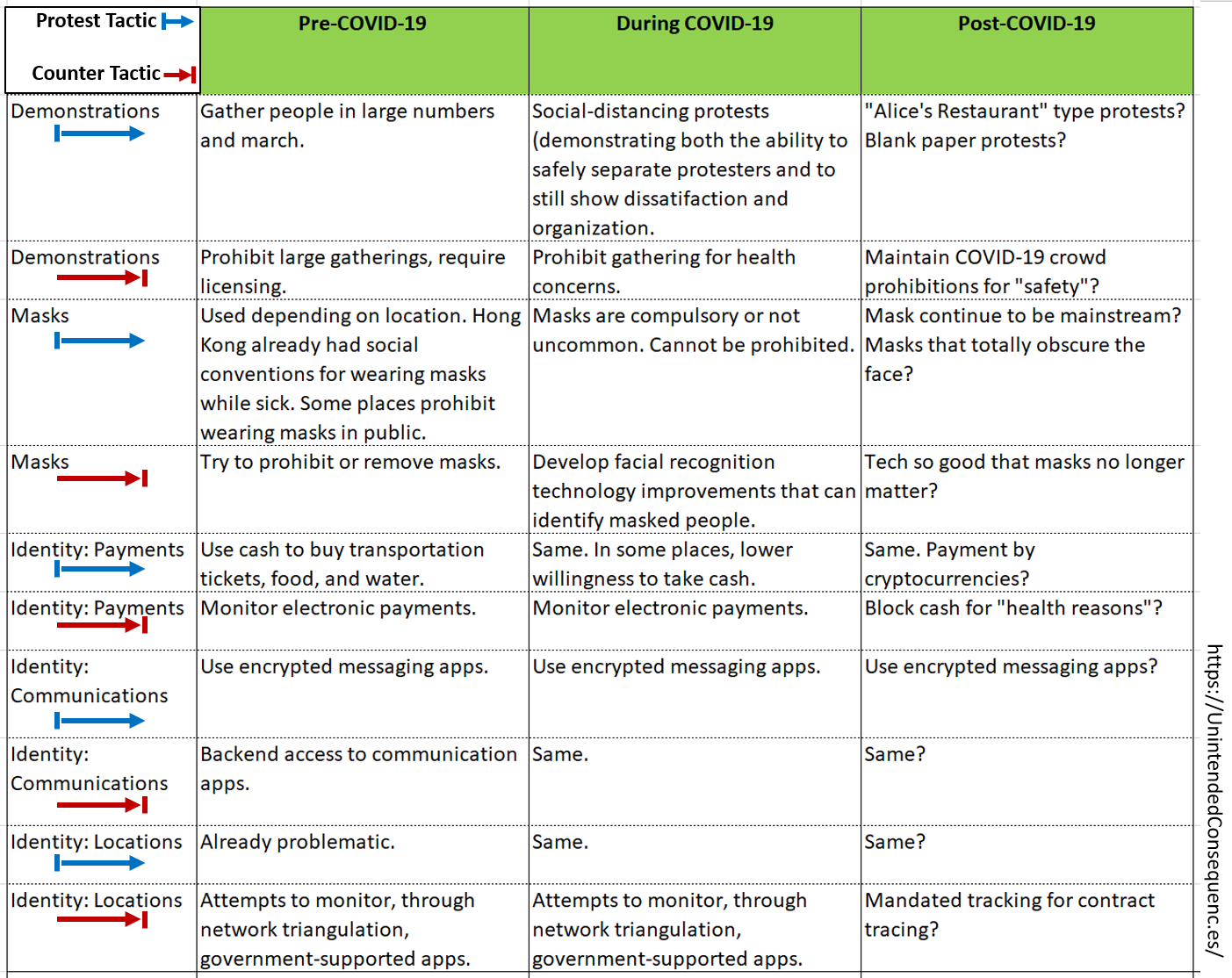As with other sudden, widespread changes, there are many second-order effects from coronavirus. I’ve been slowly chronicling them on this blog. Today, let’s look at the impact on protest movements and tactics.
Over the past few months people around the world lost their ability to protest. Or, they lost the type of protest that had worked for them — the mass gatherings to show dissatisfaction and force government response.
In locations including Algeria, Bolivia, Chile, Columbia, Czech Republic, Ecuador, Egypt, France, Haiti, Hong Kong, Indonesia, Iran, Iraq, Lebanon, Russia, Spain, Netherlands, Peru, Syria, and the US, protests have declined or have taken a different turn — due to COVID-19. What systems are changing and what is likely to remain changed after a vaccine?
